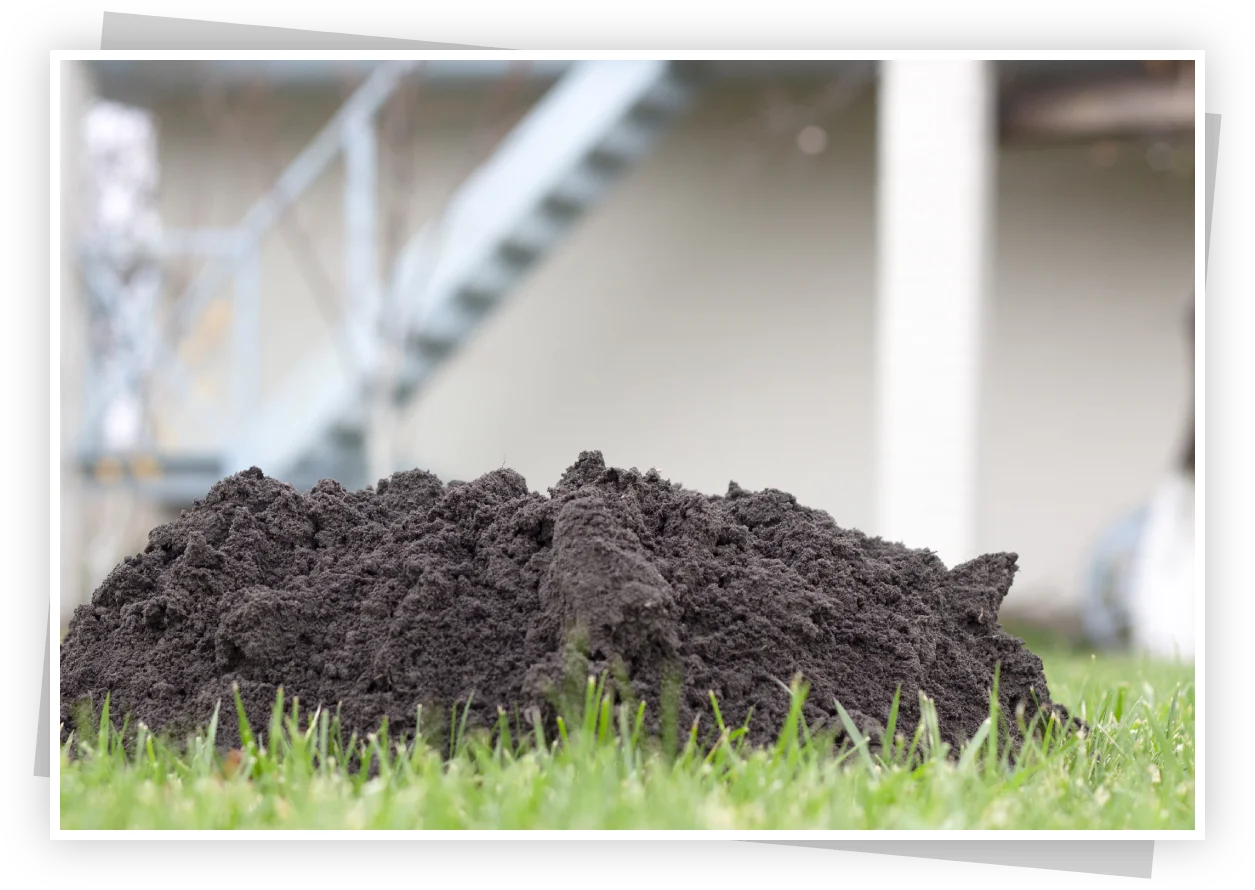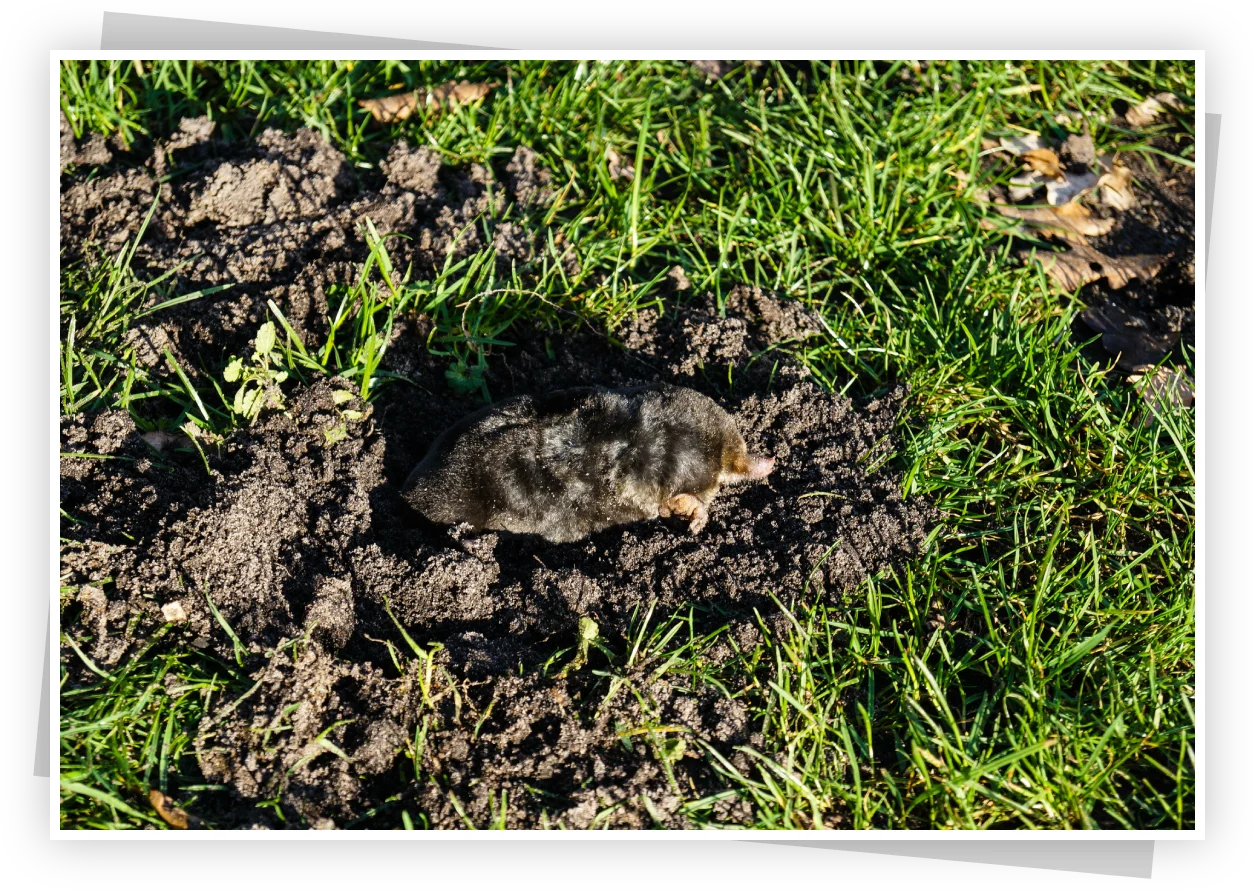

Moles 101: Some Things to Know About the Animals
Moles live underground and inhabit the lawns of residential homes, golf courses, cemeteries, and parks, as well as fallow fields, forest edges, or pastures where moist, sandy loam soils are common and digging is easy.
The type of soil, its moisture content, and the availability of food all can limit mole activity. In general, moles tend to avoid heavy clay or stony, coarse gravel soils where tunneling is difficult. Similarly, areas with soils that are either too dry or too wet to maintain the structure of their tunnel system usually are avoided.
Here in the Pacific Northwest, we have the following moles:
Townsend’s Mole
Total Length – 7 3/4 – 9 1/4inches
Tail Length – 1 1/4 – 2 inches
Weight – 4 3/8 – 7 3/8 ounces
The Townsend’s Mole is a large mole with black fur, and a short, thick, nearly naked tail and snout. Its eyes are tiny but visible. This mole has 11 upper teeth on each side, with unicuspids crowded and uneven.
Townsend’s Mole eats earthworms but also snails, slugs, centipedes, insects, and unintended vegetation, all of which you will find in its native habitat of fields and lawns. By far, Townsend’s Mole is the primary culprit of the molehills that we see in the Willamette Valley.


Shrew Mole
Total Length – 4 – 5 inches
Tail Length – 1 1/4 – 1 5/8 inches
Weight – 1/4 – 3/8 ounces
The Shrew Mole is the smallest mole in North America and is characterized by the size and shape of its shrew-like forefeet but it has the large head and dental structure of a mole. It has gray fur, and its long, hairy tail is about half its body length.
It prefers the deep, soft, moist soil of rainforests or other brushy wet areas. It is unique among moles in being able to climb low bushes, exploring for insects. Earthworms, sowbugs, beetles, insect larvae, and some vegetation make up its diet.
Coast/Pacific Mole
Total Length – 5 3/4 – 6 7/8 inches
Tail Length – 1 – 1 5/8 inches
Weight – 2 1/4 – 3 5/8 ounces
The Coast Mole has velvety black fur, a pointed snout, and a short nearly hairless tail. Its front paws are broad and spade-shaped, specialized for digging; the rear paws are smaller.
It is similar in appearance to the larger Townsend’s Mole. This mole spends most of its time underground, foraging in shallow burrows for earthworms, small invertebrates, and some plant material.

Western Pocket Gopher
Total Length – up to 14 inches
Weight – up to 18 ounces
While we see different varieties of gophers around many are just referred to as pocket gophers. They look similar to squirrels and live underground. Gophers are herbivores.
When deciding whether you have moles or gophers look at the mounds. Gophers create horseshoe-shaped mounds and often have a horseshoe shape in the middle as seen in the photo. This is caused by gophers literally coming up and throwing dirt. They can be extra destructive, showing lots of mounds in a small area. The messes they create can be extensive. Gophers are trapped using a similar method as moles with a little extra digging and larger traps.


